
The difference between a classroom with a smooth-running workshop model, and one where students are off task during MathWorkshop is simple. In the former classroom, clear expectations and routines that promote student independence are a non-negotiable. Your students must know exactly what is expected of them for the duration of your workshop block so you can focus on one-one-one conferences, and small group instruction.
In order to establish this student independence, you must take time to clearly introduce your students to the framework of Math Workshop, and set clear expectations for how they will successfully work independently. This process will take days (likely even weeks) when you first launch Math Workshop in your classroom. One of the routines you may want to introduce to your students is how to effectively and efficiently work with math partners, or as I call them – math triads.
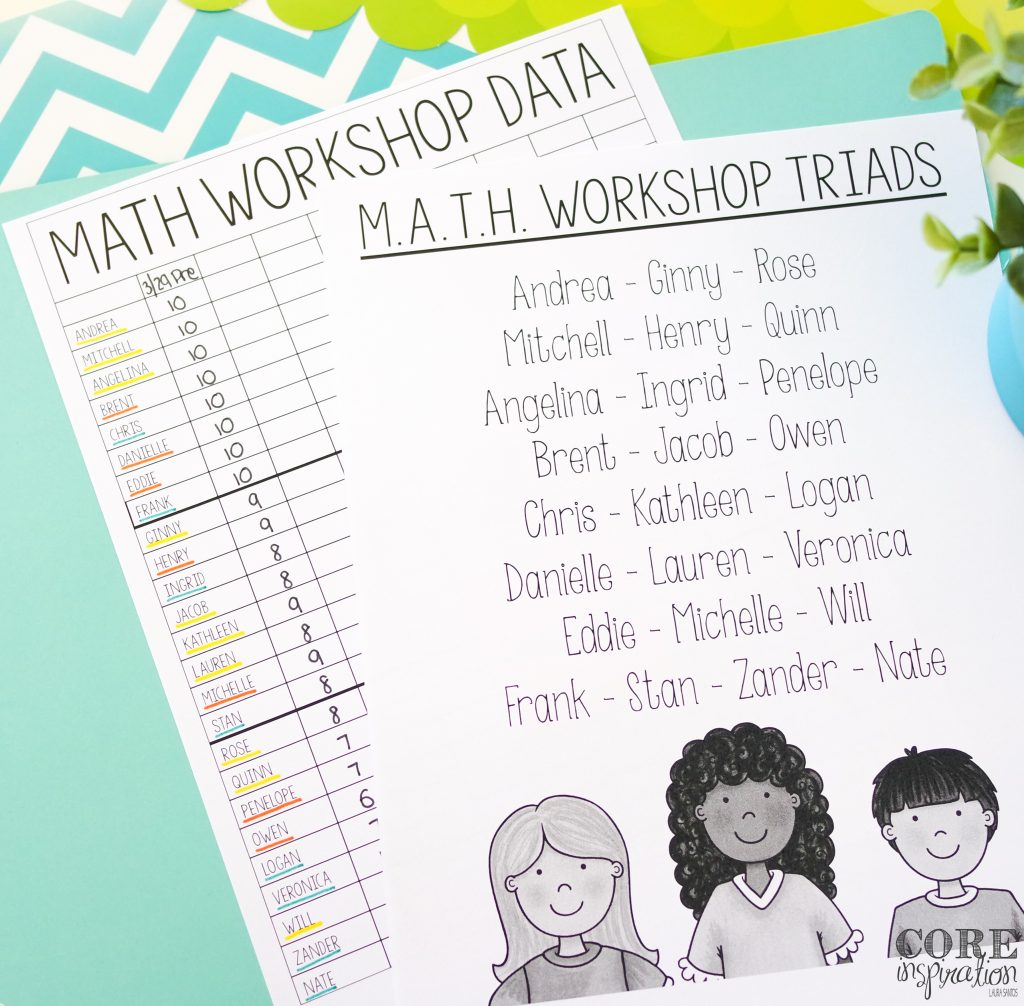
A math triad is a carefully designed group of three students (sometimes four depending on your class size) that work together to solve any problems that may arise during the course of Math Workshop each day. Math triads build student independence, and resourcefulness rather than dependence on the teacher as the sole provider of answers.
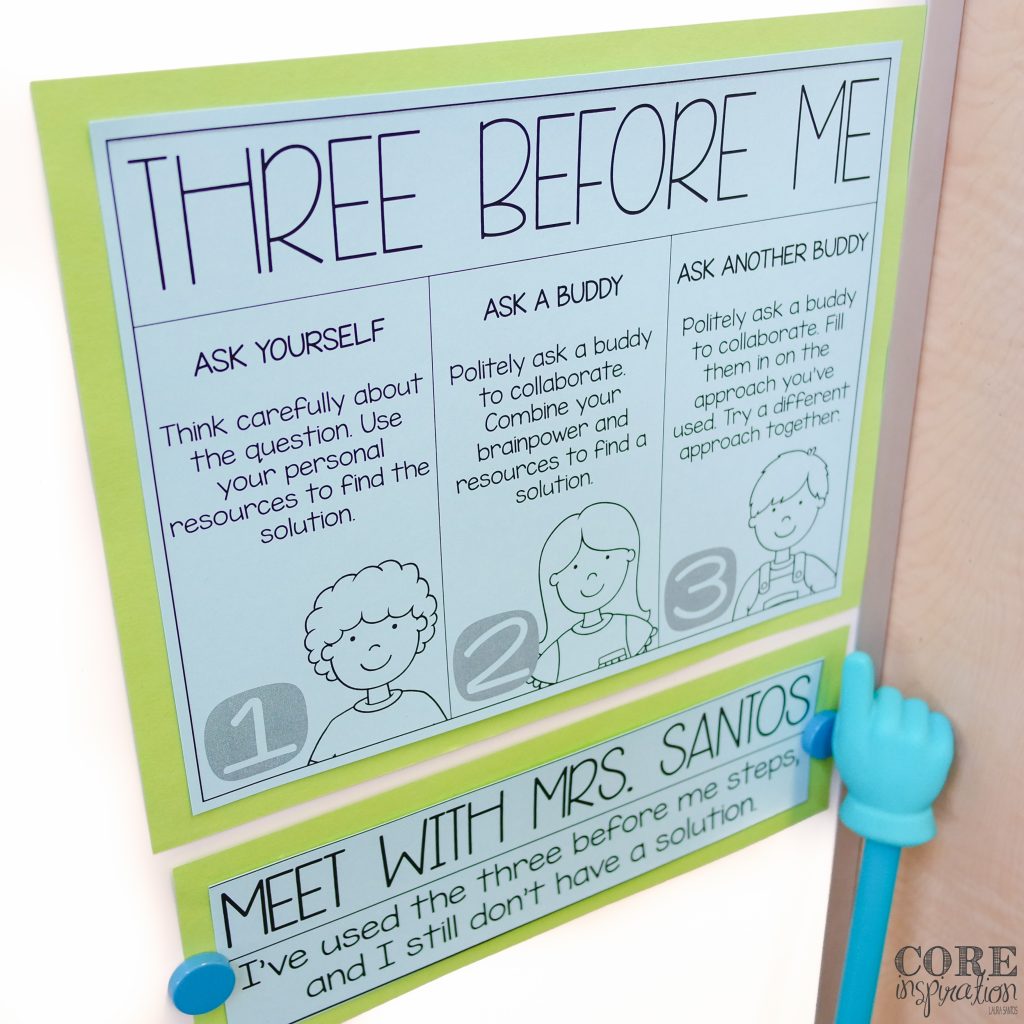
Math triads were designed with the “three before me” routine in mind. A student should ask three people to assist him/her before asking the teacher.
Math triads take this routine to the next level of efficiency by assigning students to a specific group of partners. They consistently turn to these partners for the duration of a unit, month, quarter, or trimester (as you see fit). Here are a few benefits to assigning groups:
When fostering student independence, student buy-in is essential. Introduce math triads by asking students what they want their classmates to do when collaborating with them during Math Workshop.
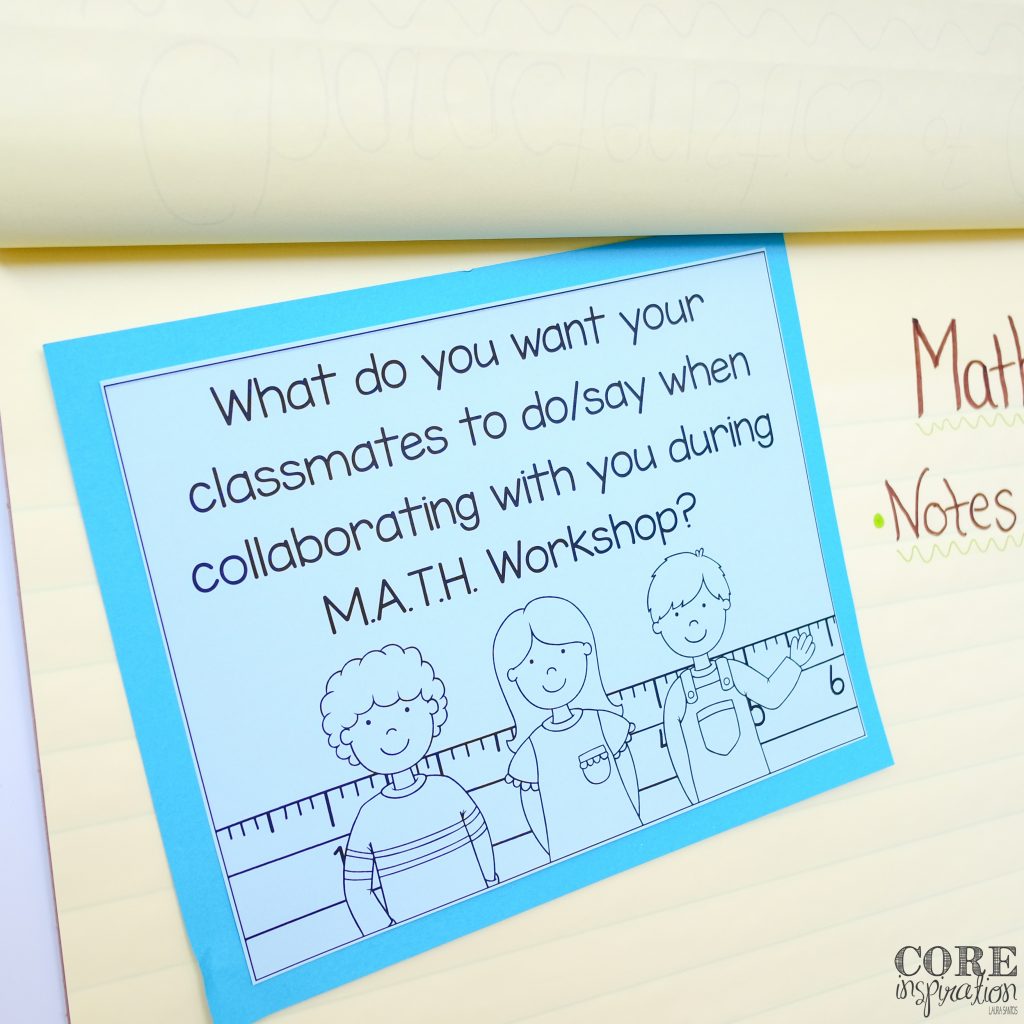
Create an anchor chart as your students share their thoughts. As you record, focus on using positive language. For example, if a student says, “Don’t talk over me when I’m talking”. You might say, “Can we make it a positive by writing, ‘Wait and listen patiently when I’m talking to you?”
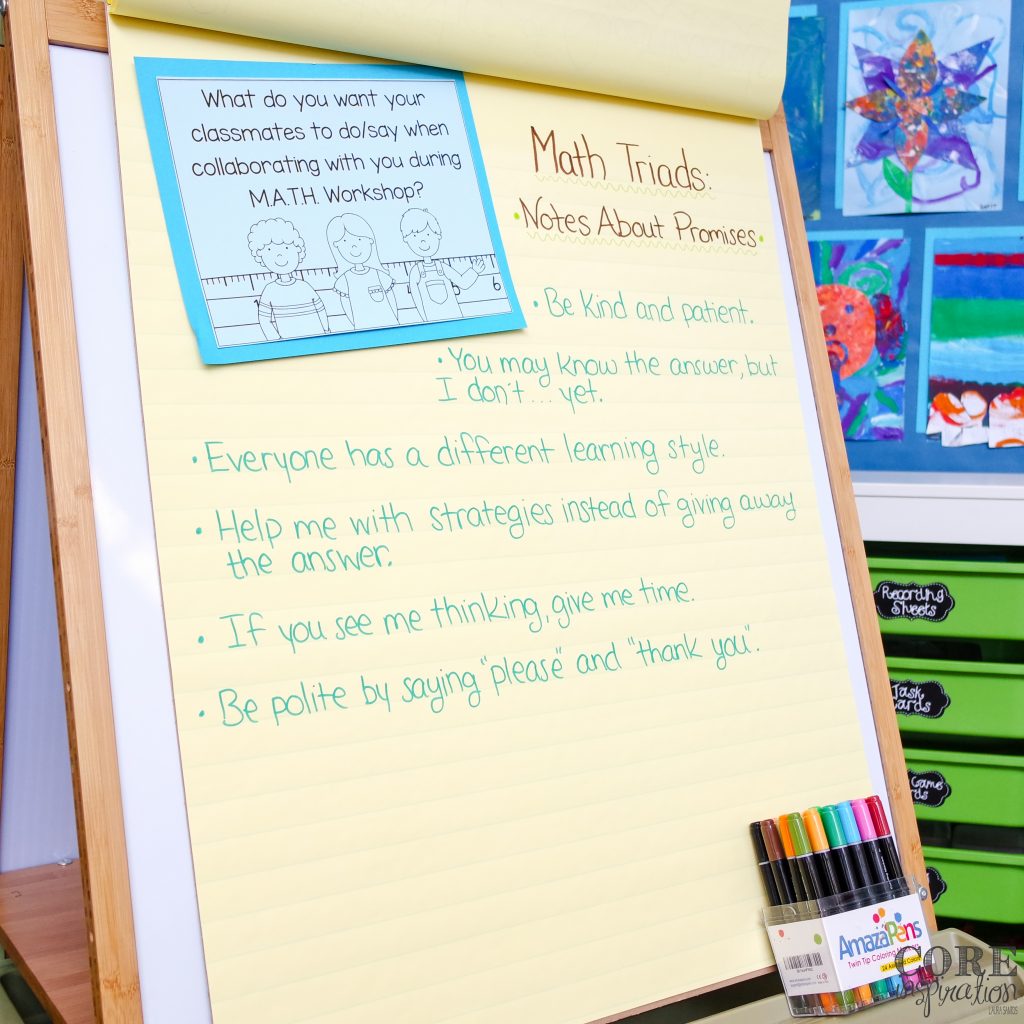
Sidenote: You will likely find, as time progresses, students will naturally phrase their ideas using positive language. This transfers into their ability to communicate clearly and effectively when faced with frustration or conflict.
After your brainstorm session, use your anchor chart to draft a Math Triad Promises “contract”. Bring the list of promises to your class the following day for review. Make tweaks as needed, print the final list of promises for each student, have them sign their promises, and slide them in the back cover of their math binder. This symbol of commitment to their collective ideas can be revisited throughout the year as needed.
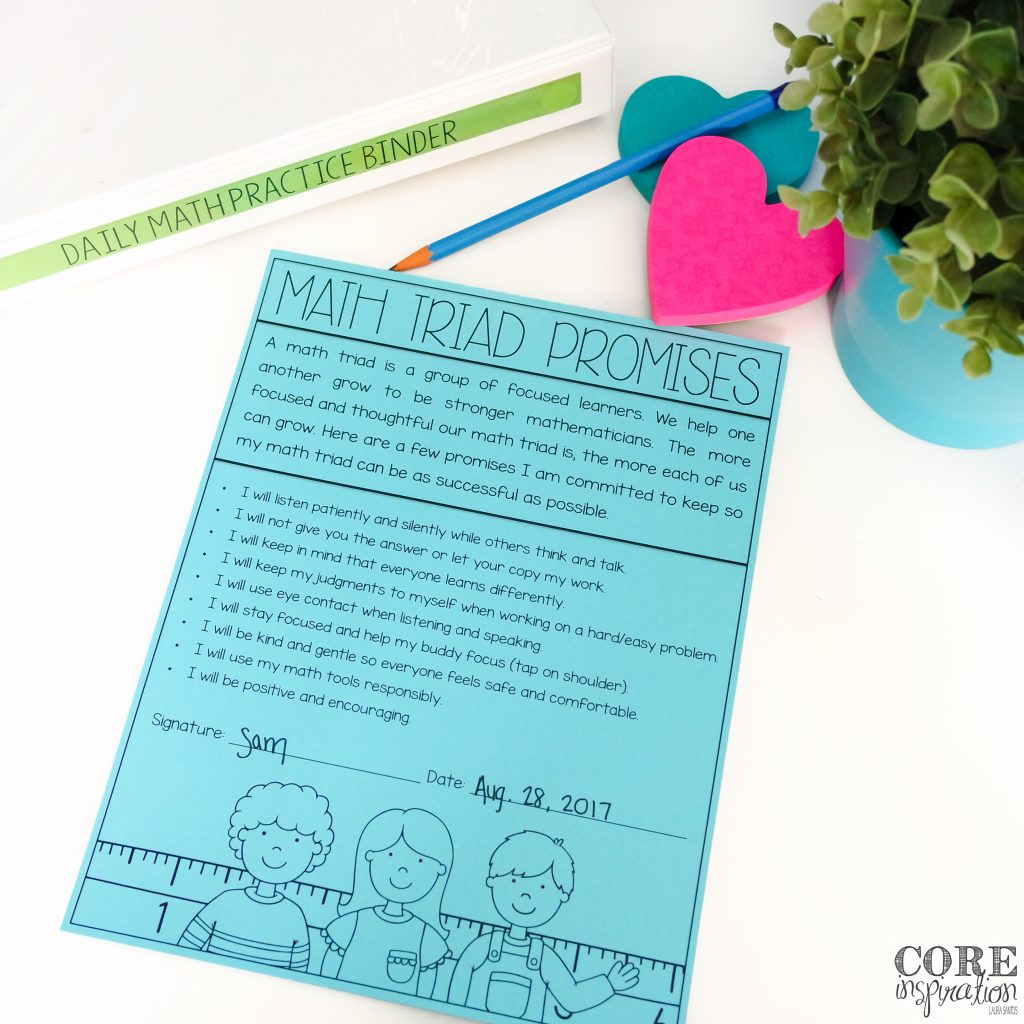
Using the promises as your guide, host a few interactive modeling sessions to demonstrate how students can effectively use their math triad as a resource during Math Workshop. Your interactive modeling may include:
You will inevitably have students that cannot find a solution, or who require more support when it comes to collaborating with their math triad. The last thing you want is for them to come interrupt your mini lesson (or worse – stand around waiting for you to finish meeting with your small group).
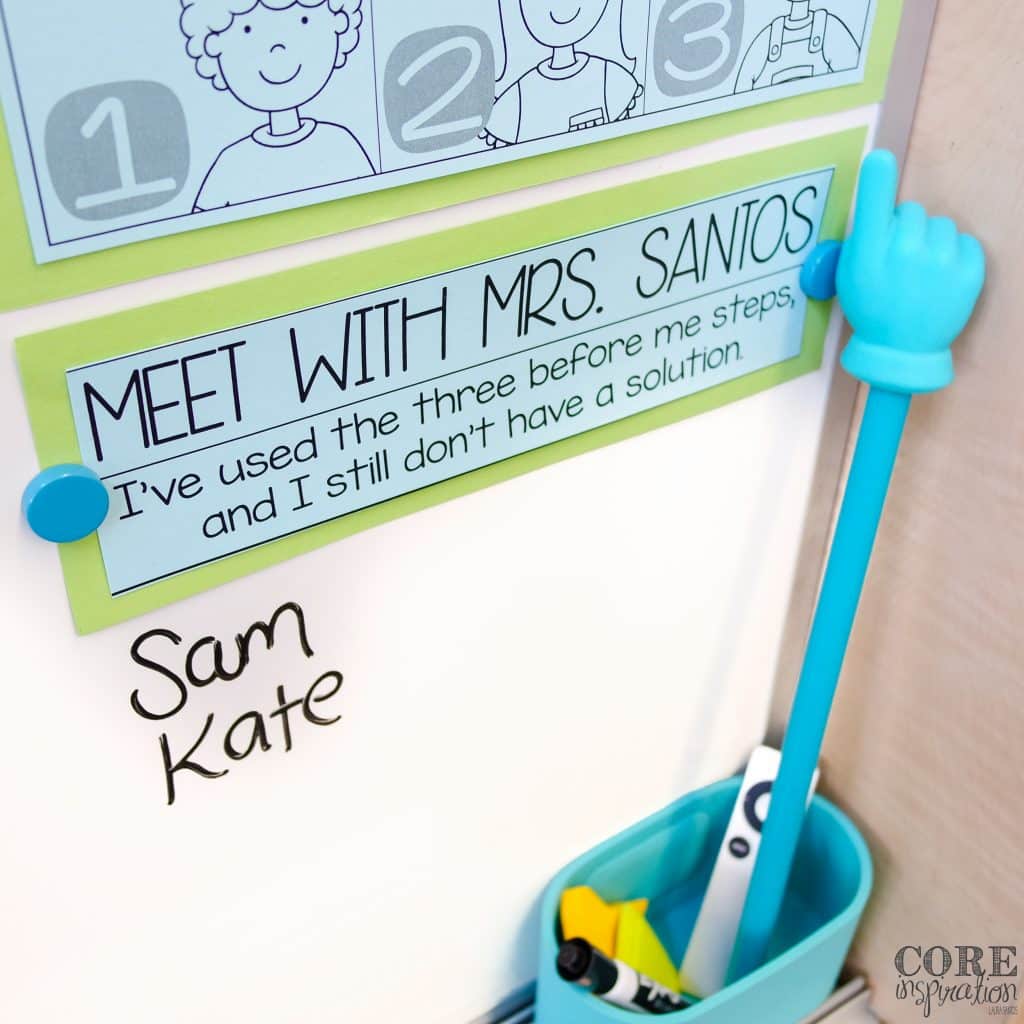
To avoid these dreaded inevitabilities, have a place where students can write their name to let you know they have run into a problem and need your assistance when you have a moment to spare.
Take time to establish your expectations for what students should do as they wait for you to check in with them. Should they move on to the next problem? Should they work on another activity? Should they do anything to prepare so your meeting time with them is more efficient?
If you are struggling to keep interruptions at bay during your small group instructional time, give math triads a try. Looking for an editable template to get your Math Triad Promises formatted and ready for student use? Click here for my Math Partners Success Kit. I would love to hear your thoughts about using math triads during your own Math Workshop in the comments below.
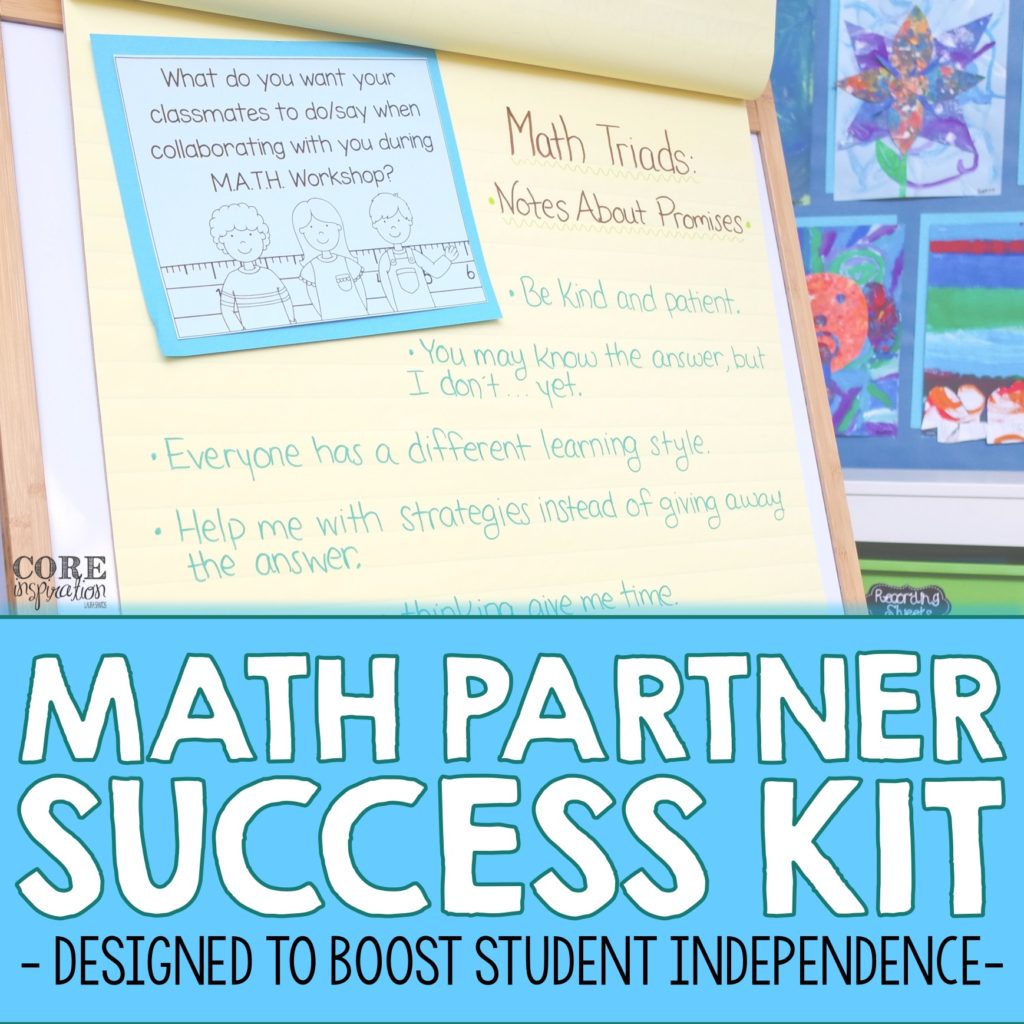
For more details about Math Workshop, check out my other posts about this instructional approach.
If you want to give Math Workshop a test drive in your own classroom, grab your Math Workshop Starter Kit, and feel free to share any questions you have about implementation in the comments below.


I’ve been an elementary teacher for ten years, and love sharing tips and resources that make differentiated learning more manageable for you. Thank you for visiting.
Learn More
Dropping by with weekly tips, classroom strategies, and free content created with you in mind.
Join me and other 2nd through 4th grade educators in the Teaching with Core Inspiration Facebook Group. This is a place to collaborate, ask questions, and learn how teachers like you are using Core Inspiration resources in their classrooms. Hope to see you there!
© 2024 Core Inspiration ∙ Website by KristenDoyle.co
9 Responses
These are FABULOUS ideas. I absolutely love such promotion of teaching students to be independent problem solvers. Thanks for sharing!
Thank you Sam. 🙂
I want to implement math workshop next year and was just discussing the challenge it will be to get my class working independently and I feel like you have just helped me skip a couple of years of trial and error! Thank you!
Hi Kelly,
Thank you for taking the time to reach out with your positive words. Wishing all the best to you and your students. 🙂
Warmly,
Laura
Hi! Your strategies are fantastic. I am wondering how this works in conjunction with the groups created for MATH rotations? Do the students seek each other out even though they aren’t working on the same rotation centre as they likely aren’t going to be in the same work group.
Thanks!
Hi Jami,
Thank you for reaching out. Yes, student do collaborate with each other even if they are in different math groups. They really enjoy helping one another and being teachers, so they never seem to mind pausing what they’re doing to help a peer. The only guideline we have is not to interrupt a member of your math triad when they are meeting with the teacher. Hope this helps.
Warmly,
Laura
Do you have a blog where you share the math activities you do during rotations. I am also interested in how you have students organize their math materials/binders?
Hi Laura! I love this idea of math triads. A couple questions come to mind though. What do you do in a situation where a student would rather confer with a friend other than someone in their math triad? Also, has there ever been a time a student in a math triad felt left out because they were never asked for help? These are just a couple possible scenarios that came to mind!
Best,
Christina
Hi Christina,
Thank you for commenting. When we learn about triads, I teach students to check in with their triad members first, and follow up with a friend if they’d prefer to do so before writing their name under the Meet With Mrs. Santos sign. There have been times when a triad member may feel left out. If this, or any other collaboration road block comes up, we talk about it during our Morning Meeting and add more notes to our promises anchor chart. Since each group of students is so unique, it’s always difficult to anticipate the exact struggles that may arise. Rather than trying to overload them with if…then scenarios from the get-go, I have them come up with their ideas for promises organically, and then build from there throughout the year as needed through morning meetings. This helps them take ownership of the systems they use during workshop. 🙂
Warmly,
Laura